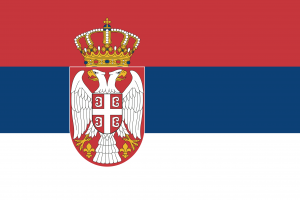Language/Serbian/Grammar/Plurals
Learning the plural forms of Serbian nouns can be a daunting task, but with the right approach and some practice, you'll be able to master them in no time. In this lesson, we'll look at the rules for forming plurals in Serbian, as well as some examples to help you understand how they work.
Overview
In Serbian, there are two main ways to form plurals: by adding an ending to the singular form of the word, or by changing the stem of the word. The endings used depend on the gender of the noun, and the stem changes depend on the type of noun.
Gender
In Serbian, nouns are divided into three genders: masculine, feminine, and neuter. The gender of a noun affects the way it is declined in the plural.
Masculine
Masculine nouns form their plurals by adding the ending -i to the singular form. For example, the singular form of the word čovek (man) is čovek, and the plural form is čoveci (men).
Feminine
Feminine nouns form their plurals by adding the ending -e to the singular form. For example, the singular form of the word žena (woman) is žena, and the plural form is žene (women).
Neuter
Neuter nouns form their plurals by adding the ending -a to the singular form. For example, the singular form of the word dete (child) is dete, and the plural form is deca (children).
Stem Changes
In addition to the endings used to form plurals, some nouns also undergo stem changes in the plural. These stem changes depend on the type of noun.
Nouns Ending in -a
Nouns ending in -a form their plurals by changing the stem of the word. For example, the singular form of the word mesto (place) is mesto, and the plural form is mesta (places).
Nouns Ending in -o
Nouns ending in -o form their plurals by changing the stem of the word. For example, the singular form of the word jezero (lake) is jezero, and the plural form is jezera (lakes).
Nouns Ending in -e
Nouns ending in -e form their plurals by changing the stem of the word. For example, the singular form of the word drvo (tree) is drvo, and the plural form is drveta (trees).
Examples
Here are some examples of nouns in the plural form:
- čoveci (men)
- žene (women)
- deca (children)
- mesta (places)
- jezera (lakes)
- drveta (trees)
With practice and a bit of patience, you'll soon be able to form plurals in Serbian with ease. To learn more about the language, why not join the Polyglot Club community? You'll find plenty of resources and people who are eager to help you on your language learning journey.
If you have any questions, please ask them in the comments section below.
Feel free to edit this wiki page if you think it can be improved. 😎

